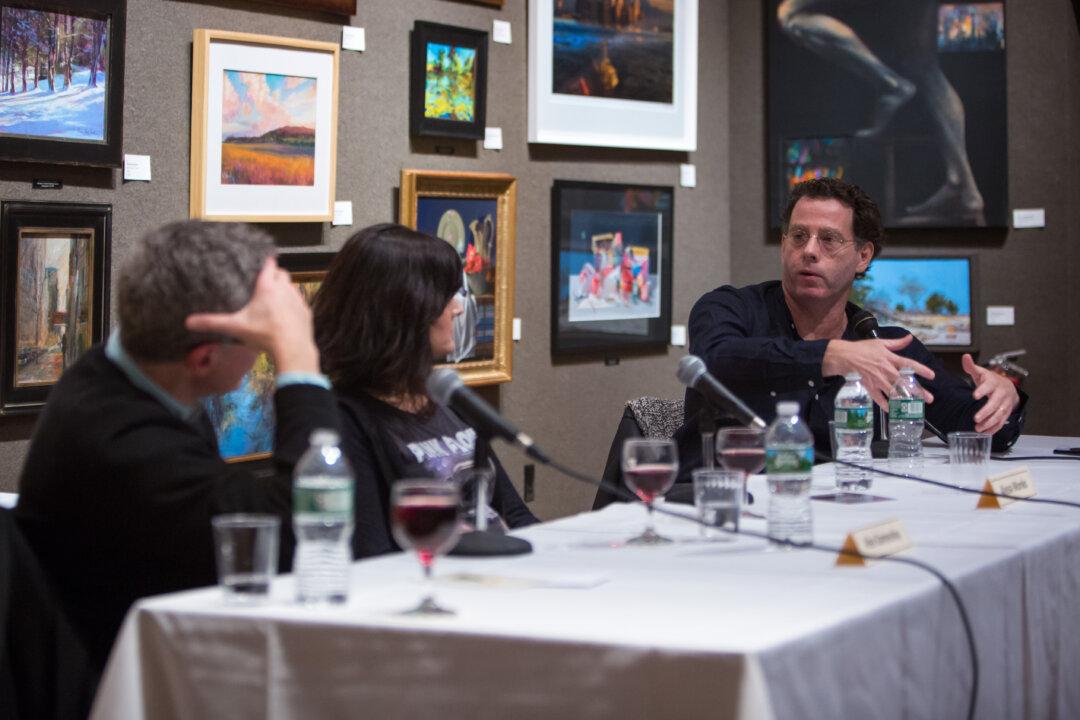NEW YORK—Three high-profile artists, each with their distinct style and approach to painting representationally—Jacob Collins, Alex Kanevsky, and Alyssa Monks—participated in the first of the “FAA Dialogues.” The Florence Academy of Art–U.S. branch launched the free educational series (sponsored by The Robert Lehman Foundation and Natural Pigments) at the Salmagundi Art Club on Nov. 30.
The fully packed club gallery buzzed with excitement as the artists grappled with “Traditional Versus Contemporary Perspectives in the Art World.” It was a timely topic considering that Christie’s had recently sold Leonardo da Vinci’s “Salvator Mundi” in its “Post-War and Contemporary Art Evening Sale.“






